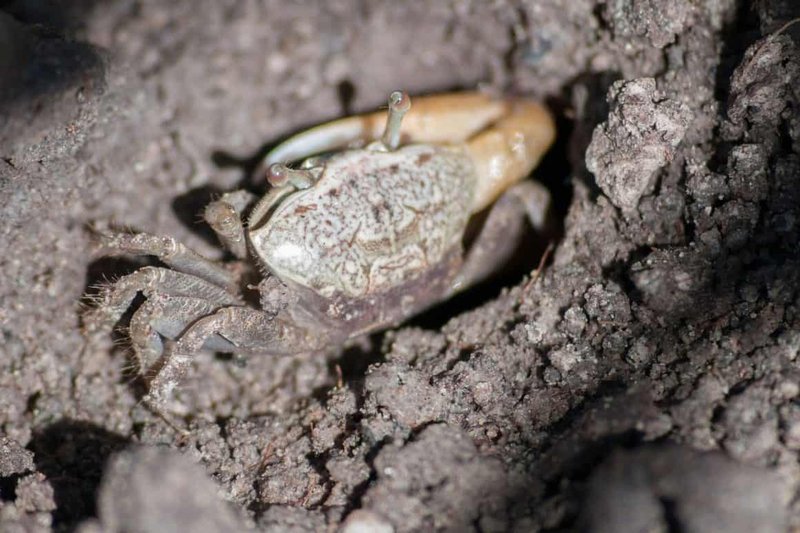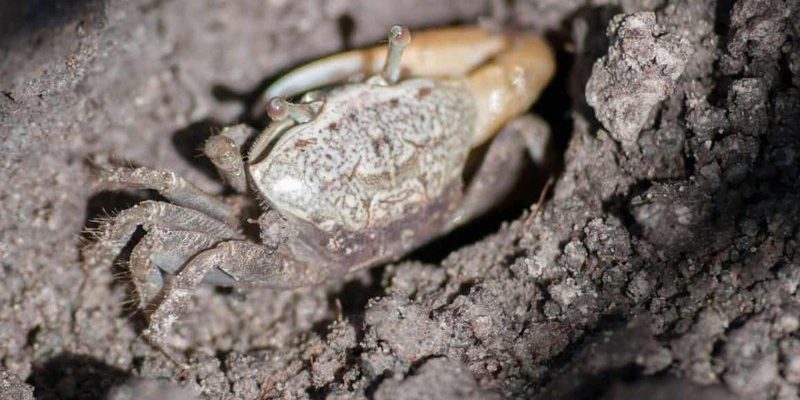
What Are Burrowing Predators?
Burrowing predators are animals that dig into the substrate of your tank, hiding and waiting for the right moment to strike. These can include certain species of fish, crustaceans, or even snails. They often have camouflage features that help them blend into the substrate, making them difficult to spot.
Consider a burrowing predator like a sneaky burglar. They set up a hideout and patiently wait for the right opportunity to snag something valuable—like your fish! Understanding what kinds of creatures could pose a threat in your aquarium is crucial. This knowledge helps you prevent any surprises and maintain a balanced environment for your aquatic pets.
Some common burrowing predators include:
- Freshwater eels
- Sandy-bottom dwelling fish such as certain species of cichlids
- Crawfish
- Burrowing snails
Recognizing them is your first step in keeping your aquarium safe. The next step is knowing the signs they’re causing trouble.
Unexpected Fish Disappearances
One of the most alarming signs that you have a burrowing predator is when you start noticing your fish are disappearing. You may suddenly find that your once-busy tank is looking a bit empty. This can be quite unsettling, especially if you’ve invested time, energy, and money into your aquatic companions.
Here’s the thing: fish can vanish for a couple of reasons. They might simply be hiding among the decorations or plants, but if you’re losing fish frequently, a predator might be the culprit. Keep an eye on your fish population. If certain individuals seem to go missing more often, it’s time to investigate.
To give you an idea of potential troublemakers:
- Freshwater eels are known for their sneaky hunting methods and can easily consume smaller fish.
- Cichlids often dig into the substrate and can display aggressive behaviors towards tank mates.
If you notice a pattern of disappearing fish, it’s worth examining your tank layout closely for suspicious activity.
Unusual Aggressive Behaviors
If you observe aggressive behavior in your remaining fish, it might not always be a sign of territorial disputes. Sometimes, it’s an indication that a burrowing predator is lurking, creating stress in your tank. Fish may become more skittish, darting around as they sense a threat.
For example, if you have a peaceful community tank and one fish suddenly starts acting like a guard dog, something’s off. The presence of a predator can disrupt the harmony of your aquarium.
Pay attention to the following behaviors:
- Fish hiding more than usual or staying close to the surface
- Sudden bursts of speed as fish try to evade an invisible threat
- Uncharacteristic aggression toward tank mates
Recognizing these signs early can help you take action before any more fish are lost.
Changes in Feeding Habits
Have your fish become more timid during feeding time? Or perhaps they’ve stopped eating altogether? Changes in eating habits can signal stress in your aquarium, and a lurking predator might be the cause. In a healthy tank, fish should be eager to eat—so if you notice them hiding or acting hesitant, pay attention.
It’s common for frightened fish to retreat and avoid food if they sense danger. Over time, this can lead to significant weight loss and health issues.
Take note of how your fish are responding during feeding times:
- Fish that usually swarm to the surface for food are suddenly absent.
- Some fish are too skittish to approach the feeding area.
- Fish are losing weight or looking unhealthy.
These changes might indicate a burrowing predator is disrupting the natural behaviors of your fish.
Unexplained Substrate Changes
Burrowing predators are experts at tunneling through the substrate, which can result in noticeable changes to your tank’s landscape. If you notice unusual holes, dug-up areas, or displaced decorations, it might be a sign of a predator at work.
Think of it like leaving behind the tracks of an intruder. Often, the first clue of their presence is found within the substrate. Some predators will create burrows or tunnels that can disturb the entire tank.
Signs to watch for include:
- Sudden holes or depressions in the substrate
- Moved or dislocated plants and decorations
- Unusual piles of substrate that weren’t there before
If your tank looks like it’s undergone a mini earthquake, it might be time to explore what’s lurking below.
Finding Uneaten Prey
If you come across uneaten prey in your tank, it could indicate that a predator is more interested in hunting down live food. This is especially true if your tank has small fish that may become a meal for a larger predator. Uneaten fish or leftovers can attract unwanted bacteria and negatively impact water quality, making it crucial to identify the problem quickly.
Here’s a scenario: let’s say you put in some feeder fish, and instead of them being gobbled up, they’re hiding in the corners while your bigger fish seem uninterested. This could mean a predator is dominating the feeding area and scaring off others.
Keep an eye on:
- Uneaten feeder fish when added to the tank
- Sudden spikes in ammonia levels due to leftover food
- Signs of stress in smaller fish species
Those uneaten meals might be a red flag signaling that something’s off-balance in your tank.
Identifying the Culprit
Once you’ve noticed the signs of a burrowing predator, the next step is identifying the culprit. This might involve careful observation, additional research, or even temporarily removing certain decorations to get a better look. Don’t be afraid to take a few minutes to really study your tank.
Look for features specific to the potential predators you suspect. For example, eels usually have long, slender bodies, while certain types of cichlids display bold coloration. Keeping a close eye on the behavior and characteristics can lead you to your tank’s troublemaker.
Remember that sometimes it’s a trial-and-error process. You might need to adjust your tank setup or try new arrangements to make the environment less appealing for a burrowing predator.
Ultimately, creating an environment where all of your aquatic friends feel safe plays a significant part in maintaining a healthy tank. Monitoring behavior, substrate, and feeding habits will help you stay one step ahead.
In closing, knowing the signs of a burrowing predator can save your aquarium from chaos. By watching for disappearances, changes in behavior, and unusual tank alterations, you can spot problems before they escalate. With a little attention and care, you can keep your underwater world thriving and happy!

